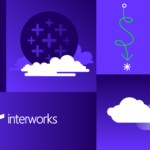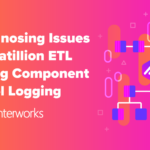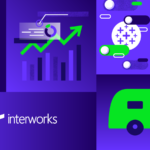Every once in a while, new technologies come along that alter your thinking.
In 1982, the spreadsheet radically changed how everyone created budgets. In 2007, Tableau Software changed the way I looked at data. For the first time, the hardware had enough power to analyze large data sets, and Tableau took advantage of what that hardware had to offer in a way that only Apple had capitalized on at that time. In the same way that Apple made computers more accessible to millions of people, Tableau made enterprise data more accessible to people who lacked hardcore database knowledge and scripting skills.
Before the cloud, only very large companies and governments could afford to collect and analyze large data set. Now you can connect to 100 million records in a cloud platform with Tableau, and within a couple of minutes, you can perform analysis, do discovery work and present your findings in an easy-to-understand visual context.
Now you can even make useful public information work with your proprietary data as if they were part of the same database. As long as there is some common data element Tableau’s data blending makes this kind of thing fast and easy.
IT Getting Less Concerned
Early in our practice at InterWorks, we faced a lot of resistance from IT/BI staff when we presented Tableau. Some had good reasons, but most were just afraid of the possibility that their skills would become obsolete. I remember saying to 150 database architects in 2009 that their jobs would not disappear, but the nature of their work would change. Instead of a few large and complex projects, they would be doing many much smaller projects. Tableau is an enabling technology that reduces the technical hurdle and cost for data analysis.
That vision has come to pass. Tableau now has nearly 30,000 business/government/education accounts globally and is still growing at more than 70% per year. IT is less concerned about losing their jobs. The need for high quality data, schema design and ETL (extract, transform and load) expertise has never been greater.
All Is Not Well
The IT technical manager’s new fear (and old fear) is the data breach. Recent events at Sony and Home Depot highlight the risk management issues faced by IT/BI managers. From the viewpoint of many IT/BI managers, Tableau’s numerous benefits come at the risk of greater potential for data breaches. Every big company has extensive risk management mitigation rules. These have to be weighed against the increasing need for data availability, the ability to blend external sources and the desire to ensure some level of rigor and quality to the new paradigm.
How is an IT/BI manager to balance data quality, data availability, security and governance in a way that encourages the legion of new analysts that aren’t part of the IT team? How do you “govern and secure” hundreds of laptop users who have access to propriety data and external data sources? How do you know if some kind of secure information (ala Sony) is sitting in a network storage device that is potentially explosive?
DataGravity Is an Answer
When I first looked at DataGravity, it just made sense. Why hadn’t anyone thought of making storage data-aware? I suspect many had, but the cost of flash memory was a barrier. This is no longer the case. DataGravity has an affordable solution that will help the IT manager govern and secure data without being overly restrictive.
Here’s one scenario. If you have many people with access to secure company data using Tableau, blending external data and publishing data sources, create a process in which all of a user’s laptop work is saved to a specific file. That file could then be automatically synced to a DataGravity storage device behind your firewall. DataGravity provides the early warning system for IT. If something sensitive or questionable appears in the network-aware storage, the appropriate staff gets notified automatically. An analysis of when and by whom that file was created or accessed is also provided. The IT/BI person responsible can then take appropriate proactive action.
If you’d like to dive into the details of how this kind of a system could be set up using Tableau and DataGravity, get in touch. We can help.





